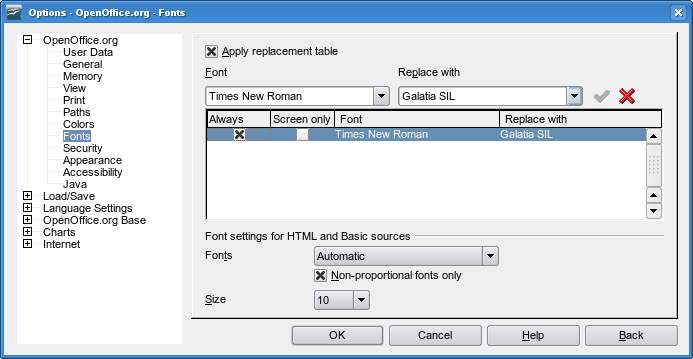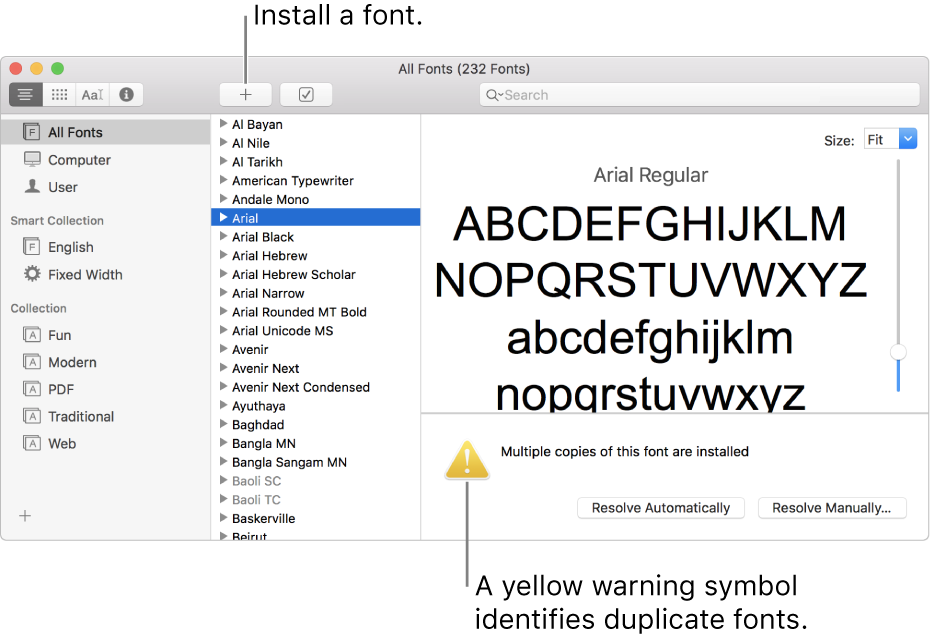Downloadable Fonts For Open Office
Dec 20, 2009 - In Windows, draw the font files to the Fonts folder, found in the Control Panel. For more information on using Tengwar Telcontar in OpenOffice,.
.Written inand,and141 (4.1.4 Windows.exe)(s)(ISO/IEC 26300)Available in41 languagesWebsiteApache OpenOffice ( AOO) is an. It is one of the successor projects of and the designated successor of. It is a close cousin of. It contains a (Writer), a (Calc), a application (Impress), a application (Draw), a (Math), and a application (Base).Apache OpenOffice's default is the Format (ODF), an / standard. It can also read and write a wide variety of other file formats, with particular attention to those from – although unlike LibreOffice, it cannot save Microsoft's post-2007 formats, only import them.Apache OpenOffice is developed for, and, with ports to other. It is distributed under the.
The first release was version 3.4.0, on 8 May 2012. The most recent significant feature release was version 4.1, which was made available in 2014. The project has continued to release minor updates that fix bugs, update dictionaries and sometimes include feature enhancements.Difficulties maintaining a sufficient number of contributors to keep the project viable have persisted for several years. In January 2015 the project reported a lack of active developers and code contributions. There have been continual problems providing timely fixes to security since 2015. Downloads of the software peaked in 2013 with an average of just under 148,000 per day compared to around 50,000 in Q1 2019. See also:After acquiring in January 2010, continued developing OpenOffice.org and, which it renamed Oracle Open Office.
In September 2010, the majority of outside OpenOffice.org developers left the project due to concerns over Sun's, and then Oracle's, management of the project, to form (TDF). TDF released the in January 2011, which most soon moved to, including in 2012.In April 2011, Oracle stopped development of OpenOffice.org and laid off the remaining development team. Its reasons for doing so were not disclosed; some speculate that it was due to the loss of mindshare with much of the community moving to LibreOffice while others suggest it was a commercial decision. In June 2011 Oracle contributed the OpenOffice.org trademarks and source code to the Apache Software Foundation, which Apache re-licensed under the., to whom Oracle had contractual obligations concerning the code, appears to have preferred that OpenOffice.org be spun out to the Apache Software Foundation above other options or being abandoned by Oracle.
Additionally, in March 2012, in the context of donating to the Apache OpenOffice project, IBM expressed a preference for permissive licenses, such as the Apache license, over license. The developer pool for the Apache project was seeded by IBM employees, who, from project inception through to 2015, did the majority of the development.The project was accepted to the on 13 June 2011, the Oracle code drop was imported on 29 August 2011, Apache OpenOffice 3.4 was released 8 May 2012 and Apache OpenOffice graduated as a top-level Apache project on 18 October 2012.IBM donated the codebase to the Apache Software Foundation in 2012, and Symphony was deprecated in favour of Apache OpenOffice. Many features and bug fixes, including a reworked sidebar, were merged.
The screen reader support from Symphony was ported and included in the AOO 4.1 release (April 2014), although its first appearance in an open source software release was as part of LibreOffice 4.2 in January 2014. IBM ceased official participation by the release of AOO 4.1.1.In September 2016, OpenOffice's project management committee chair Dennis Hamilton began a discussion of possibly discontinuing the project, after the Apache board had put them on monthly reporting due to the project's ongoing problems handling security issues. A timeline of major derivatives of StarOffice and OpenOffice.org with Apache OpenOffice in blue Naming By December 2011, the project was being called Apache OpenOffice.org (Incubating); in 2012, the project chose the name Apache OpenOffice, a name used in the 3.4 press release. Features Components ModuleNotesWriterA analogous to and.CalcA analogous to and.ImpressA analogous to.
Can export presentations to (SWF) files, allowing them to be played on any computer with a Flash player installed.DrawA comparable in features to the drawing functions in.MathA tool for creating and editing mathematical formulae, analogous to. Formulae can be embedded inside other Apache OpenOffice documents, such as those created by Writer. It supports multiple.BaseA analogous to. Base can function as a front-end to a number of different database systems, including Access databases (JET), data sources and /. Native to the suite is a version of.Fonts Apache OpenOffice includes OpenSymbol, the fonts, and the Apache-licensed ChromeOS fonts Arimo (sans serif), Tinos (serif) and Cousine (monospace). OpenOffice Basic.
Free Fonts
Main article:Apache OpenOffice includes OpenOffice Basic, a similar to Microsoft (VBA). Apache OpenOffice has some Microsoft VBA macro support. OpenOffice Basic is available in Writer, Calc, Draw, Impress and Base.File formats Apache OpenOffice inherits its handling of file formats from OpenOffice.org, excluding some which were supported only by libraries, such as support. There is no definitive list of what formats the program supports other than the program's behaviour. Notable claimed improvements in file format handling in 4.0 include improved interoperability with Microsoft's 2007 format (DOCX, XLSX, PPTX) — although it cannot write OOXML, only read it to some degree.

Free Fonts For Openoffice Writer
Use of Java Apache OpenOffice does not bundle a with the installer, as OpenOffice.org did, although the suite still requires Java for 'full functionality.' Supported operating systems Apache OpenOffice 4.1.0 was released for versions of XP or later, (32-bit and 64-bit), and 10.7 or later.Other operating systems are supported by community ports; completed ports for 3.4.1 included various other Linux platforms, and, and ports of 3.4.0 for – and Solaris x86. It was also being ported to ( new trademark/successor). Apache OpenOffice 3.4 logoApache OpenOffice does not '; it eschews time-based release schedules, releasing only 'when it is ready'.Apache OpenOffice has lost its initial developer participation. During March 2014 – March 2015 it had only sixteen developers; the top four (by changesets) were IBM employees, and IBM had ceased official participation by the release of 4.1.1.In January 2015, the project reported that it was struggling to attract new volunteers because of a lack of mentoring and badly in need of contributions from experienced developers. Industry analysts noted the project's inactivity, describing it as 'all but stalled' and 'dying' and noting its inability to maintain OpenOffice infrastructure or security.
Developer Christian Schaller sent an open letter to the Apache Software Foundation in August 2015 asking them to direct Apache OpenOffice users towards LibreOffice 'for the sake of open source and free software', which was widely covered and echoed by others.The project produced two minor updates in 2017, although there was concern about the potential bugginess of the first of these releases. Patricia Shanahan, the release manager for the previous year's update noted: 'I don't like the idea of changes going out to millions of users having only been seriously examined by one programmer — even if I'm that programmer.' Brett Porter, then Apache Software Foundation chairman, asked if the project should 'discourage downloads'. The next update, released in November 2018, included fixes for regressions introduced in previous releases.The Register published an article in October 2018 entitled 'Apache OpenOffice, the Schrodinger's app: No one knows if it's dead or alive, no one really wants to look inside', which found there were 141 code committers at the time of publication, compared to 140 in 2014; this was a change from the sustained growth experienced prior to 2014. The article concluded: 'Reports of AOO's death appear to have been greatly exaggerated; the project just looks that way because it's moving slowly.'
Security Between October 2014 and July 2015 the project had no release manager. During this period, in April 2015, a known security in Apache OpenOffice 4.1.1 was announced (CVE-2015-1774), but the project did not have the developers available to release the software fix. Instead, the Apache project published a workaround for users, leaving the vulnerability in the download. Former PMC chair Andrea Pescetti volunteered as release manager in July 2015 and version 4.1.2 was released in October 2015.It was revealed in October 2016 that 4.1.2 had been distributed with a known security hole (CVE-2016-1513) for nearly a year as the project had not had the development resources to fix it.4.1.3 was known to have security issues since at least January 2017, but fixes to them were delayed by an absent release manager for 4.1.4. The January 2017 Board minutes were edited after publication to remove mention of the security issue, which of the ASF board claimed would be fixed by May 2017. Fixes were finally released in October 2017. Further unfixed problems showed up in February 2019, with The Register unable to get a response from the developers, although the existing doesn't work with OpenOffice.
Free Fonts For Openoffice
Releases Oracle had improved Draw (adding ), Writer (adding 1.2) and Calc in the OpenOffice.org 3.4 (12 April 2011), though it cancelled the project only a few days later.Apache OpenOffice 3.4 was released on 8 May 2012. It differed from the thirteen-month-older OpenOffice.org 3.4 beta mainly in license-related details. Notably, the project removed both code and fonts which were under licenses unacceptable to Apache. Language support was considerably reduced, to 15 languages from 121 in OpenOffice.org 3.3. Java, required for the database application, was no longer bundled with the software. 3.4.1, released 23 August 2012, added five languages back, with a further eight added 30 January 2013.Version 4.0 was released 23 July 2013.
Features include merging the Symphony code drop, reimplementing the sidebar-style interface from Symphony, improved install, MS Office interoperability enhancements, and performance improvements. 4.0.1 added nine new languages.Version 4.1 was released in April 2014. Various features lined up for 4.1 include comments on text ranges, IAccessible2, in-place editing of input fields, interactive cropping, importing pictures from files and other improvements. 4.1.1 (released 14 August 2014) fixed critical issues in 4.1. 4.1.2 (released in October 2015) was a bugfix release, with improvements in packaging and removal of the support associated with the vulnerability CVE-2015-1774. 4.1.3 (September 2016) had updates to the existing language dictionaries, enhanced build tools for AOO developers, a bug fix for databases on macOS, and a security fix for vulnerability CVE-2016-1513.

4.1.4 contained security fixes. Version 4.1.5 was released in December 2017, containing bug fixes. Distribution. Apache OpenOffice weekly downloads since 2012As a result of harmful downloads being offered by scammers, the project strongly recommends all downloads be made via its official download page, which is managed off-site.
Partly answering my own question:LibreOffice comes with these fonts, as posted:And here are some of the fonts that come with OpenOffice, accroding to:OpenOffice includes OpenSymbol, DejaVu,the Liberation fonts (from 2.4 to 3.3) and the Gentium fonts (since 3.2). Versions prior to 2.3 included the Bitstream Vera fonts. After 3.4 the GPL-licensed Liberation fonts were removed and replaced by the Apache-licensed ChromeOS fonts Arimo (sans serif), Tinos (serif) and Cousine (monospace). OpenOffice will also use the default fonts of the running operating system. Fonts are inherited by from the OS, not the application. If you want to know what fonts you will have in any product, open your fonts folder.Programs adding fonts is not common, especially for something where the file needs to be shared and still look good.Photoshop is a good exception, butHow can I add fonts to OpenOffice?OpenOffice.org uses the fonts that are installed in your system. Addnew fonts using the Font management tools for your Operating System(for example in Microsoft Windows, you add new fonts via Control PanelFonts).
You may need to restart OpenOffice.org (including the Quickstarter), to see the new fonts in the Font Name list box.And, LibreOffice also seemsThe set of fonts is not property of the office suite, but only theconfiguration of your operating system. Install the necessary fonts inthe system and they will be available in office applications.
